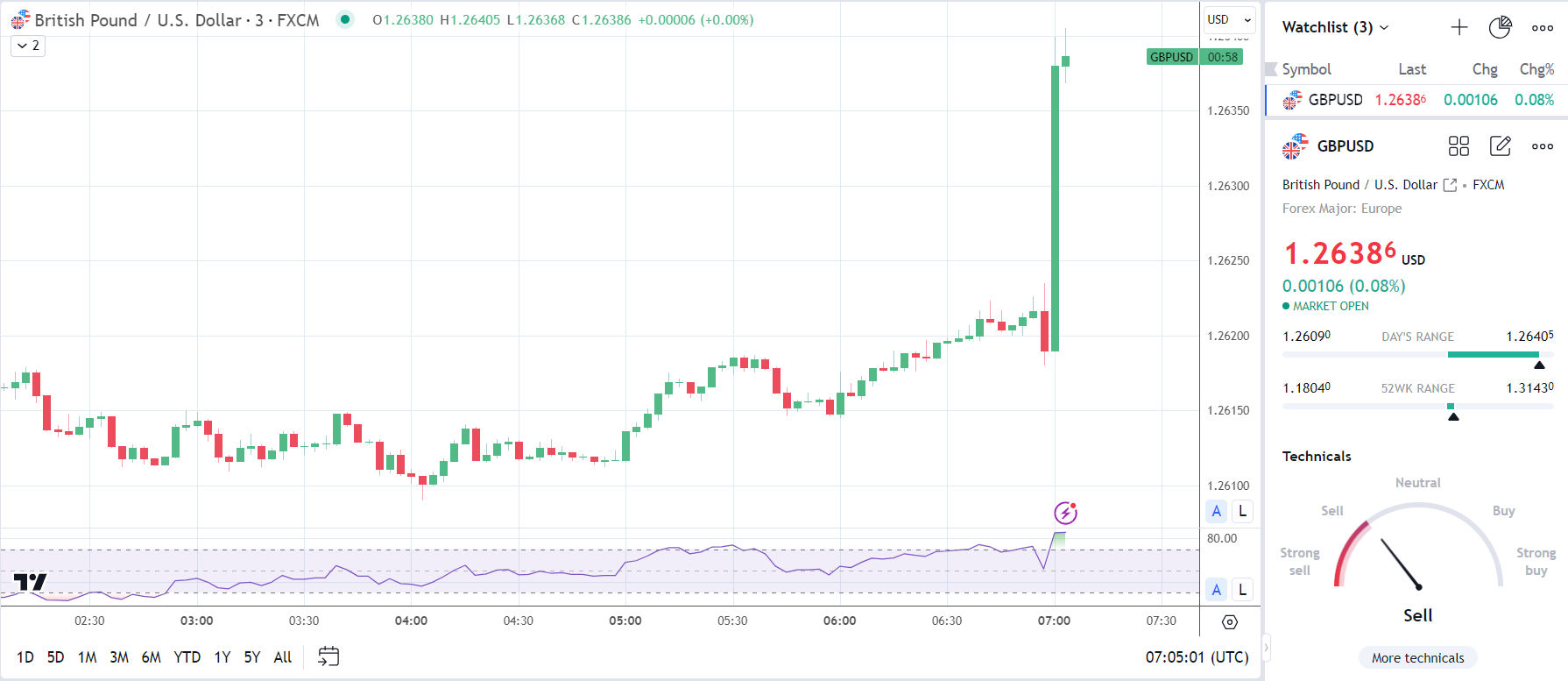
In December, the UK saw a decrease in the unemployment rate from 3.9% to 3.8%, despite a decline in wage growth. This unexpected change in figures could challenge predictions regarding a potential rate cut by the Bank of England.
The UK labor market took center stage on Tuesday, with a focus on wage growth despite softer November 2023 figures.
In February, the year-over-year increase in average earnings (including bonuses) for the three months to December was 5.8%, surpassing economists' forecast of 5.6%. This marked a decrease from November's 6.5% and October's 7.2%. The unemployment rate dropped from 3.9% to 3.8%, with employment increasing by 72k, just below the forecasted 73k, and a 4.0% unemployment rate.
The unexpected decline in the UK unemployment rate could indicate persistent wage growth trends, potentially supporting wage growth and increasing disposable income. This contrasts with softer wage growth figures that might typically prompt the BoE to consider interest rate cuts, with potential impacts on disposable income, consumer spending, and inflation.
Before the UK employment data release, the GBP/USD reached a high of $1.26287 but later decreased to $1.26090. However, following the labor market report, the GBP/USD rallied from $1.26190 to a post-stat high of $1.26405. On that Tuesday, GBP/USD was up 0.08% to $1.26386.

130224 GBPUSD 3 Minute Chart
The upcoming US CPI Report is expected to attract investor attention. If inflation remains persistent, it could diminish expectations of a Fed interest rate cut before June. Economists predict a decrease in the US annual inflation rate from 3.4% to 2.9% in January, but anticipate the core inflation rate to decline from 3.9% to 3.7%.

Subscribe to our daily newsletter and get the best forex trading information and markets status updates
Trade within minutes!
Comment (0)